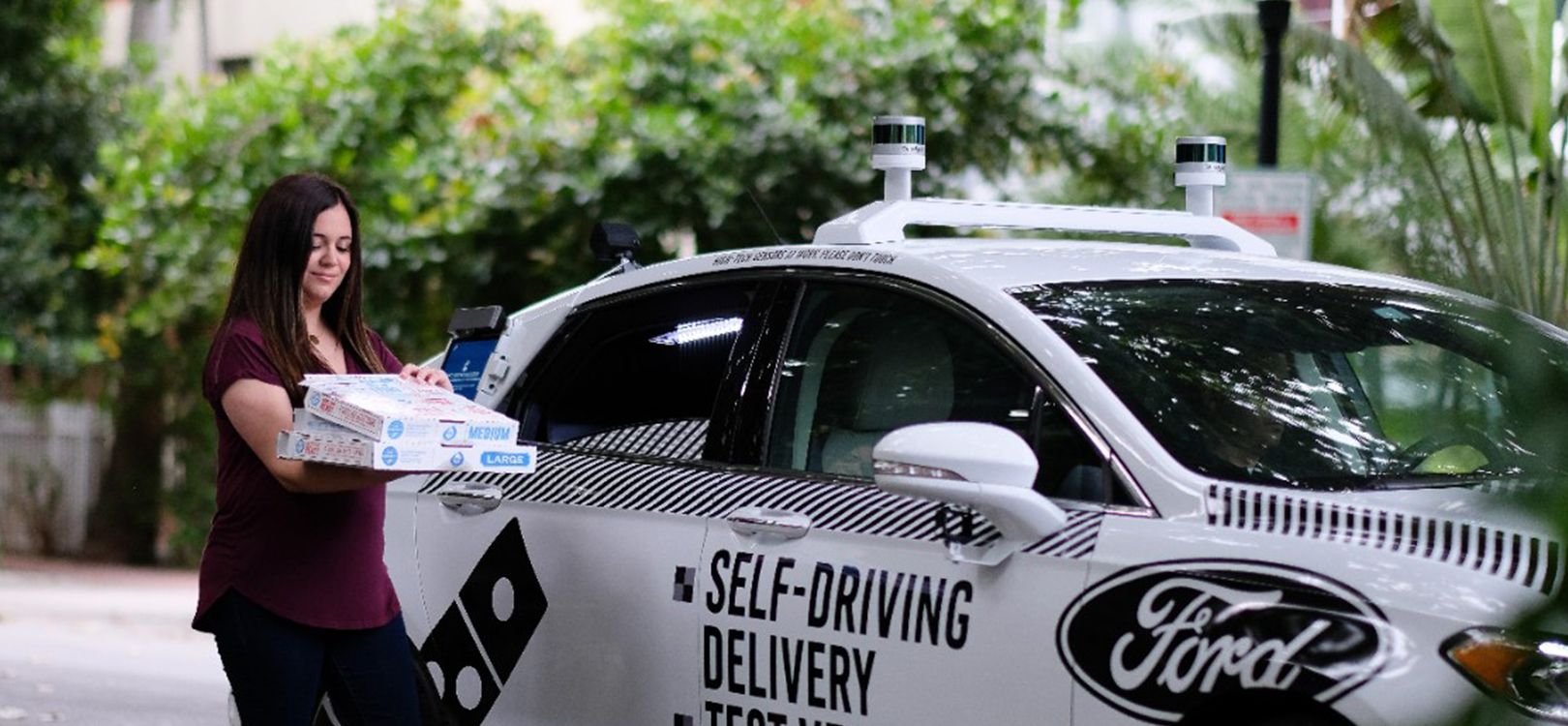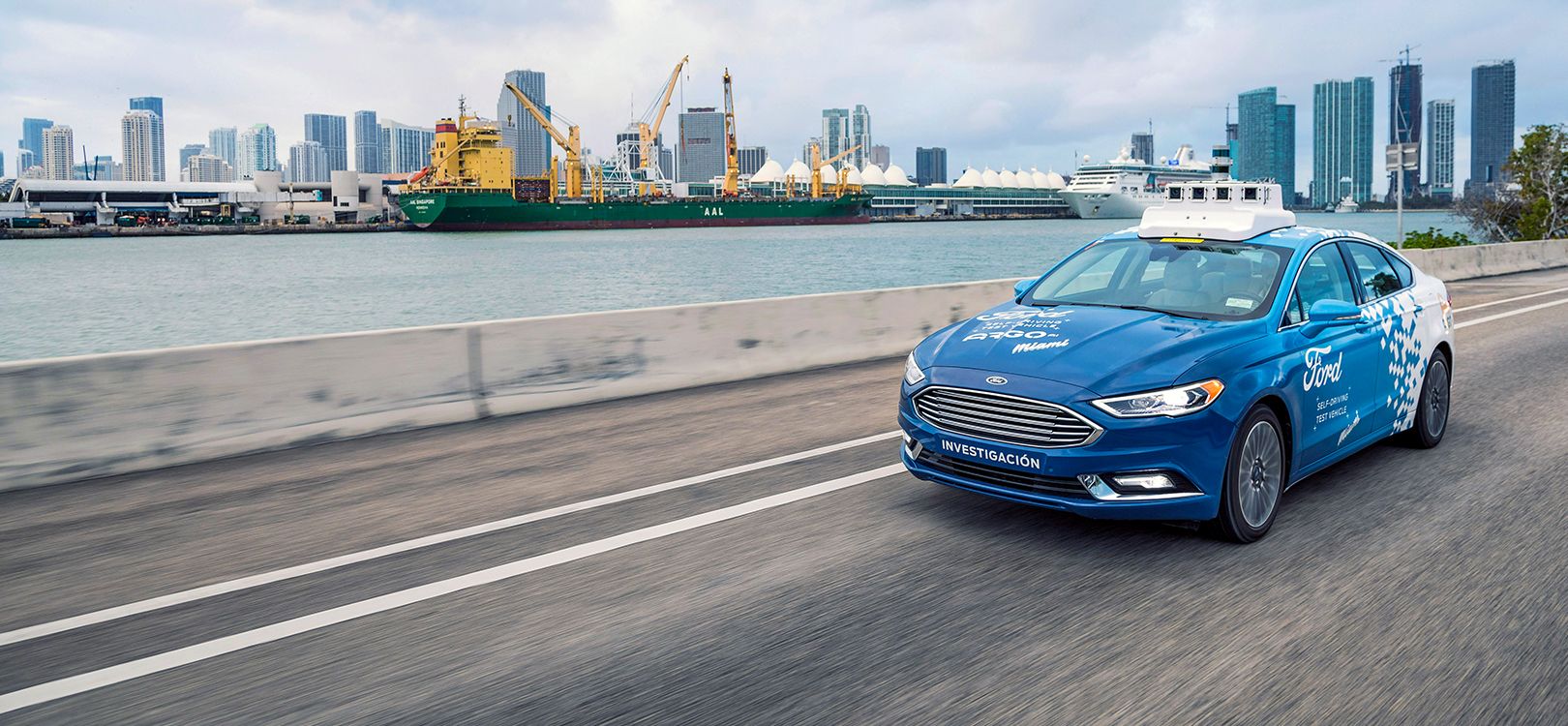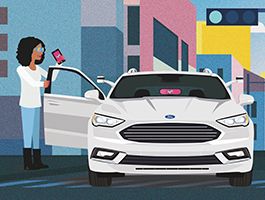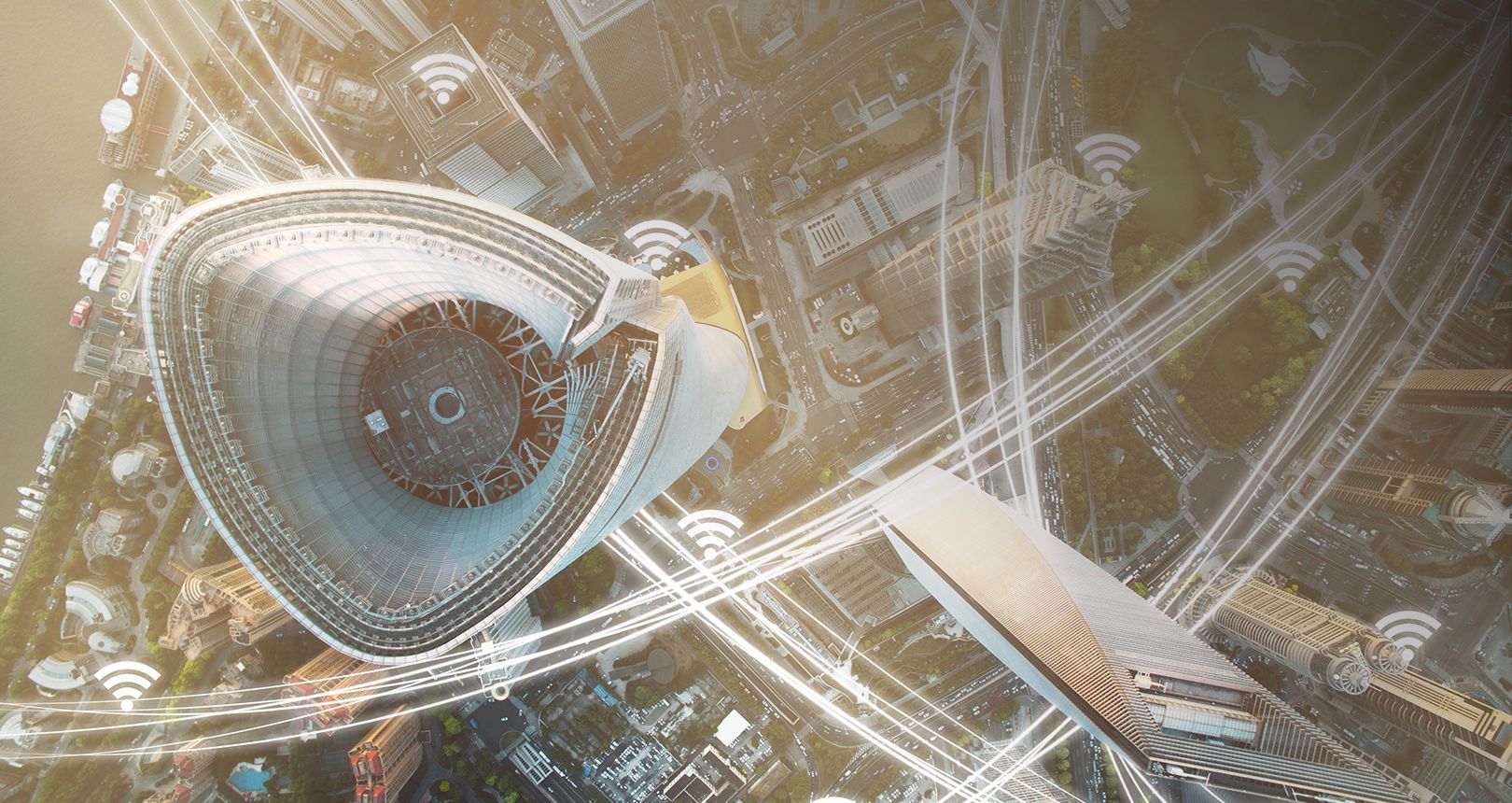The Story So Far...
Faced with rapid urbanization, pollution and congestion, it’s increasingly clear that we need to change how our cities function. At Ford, we have reimagined the streets in a City of Tomorrow, in which people and goods can move more efficiently.
Within that new future, we foresee a time when driver-free cars become a fundamental part of our daily lives: smart vehicles for a smart world. That’s why we have been a leading player in the development of self-driving vehicles for more than 10 years, working with key partners to incubate ideas and accelerate solutions.

Going Driverless
Self-driving vehicles offer many ways in which we can change how our cities work for the better. We believe they offer safer, more efficient, more widespread solutions that benefit cities, companies and individuals. That’s why we’re working with partners such as Domino’s, Lyft and Postmates to develop pilot projects using self-driving vehicles. We’re also working to ensure these vehicles are safe and reliable, and to gauge public reaction to this new technology. Our target is to begin production by 2021 of a purpose-built, self-driving vehicle so we can enable mobility services at scale.
We already have much of the technological capability we need to completely redesign urban transportation systems. But we can’t just implement it without first fully understanding how it will actually transform people’s lives. So we’ve begun by collaborating with cities, civic organizations, urban planners, technologists and designers around the world to see how it all comes together under real-world conditions.
Ken Washington, our Vice President of Research and Engineering and Chief Technology Officer, explains why ride sharing will likely be the public’s first interaction with driverless vehicles.

Miami: The New Proving Ground for Self-Driving Vehicles
In finding a testing ground for this vital stage in the development of self-driving technology, Miami-Dade proved to be a natural choice for us. With a well-documented reputation for congestion, Miami is a challenging environment for the car owner, and its variety of urban and suburban terrain should give our technology a stern test.
Miami is the fifth-most congested city in the United States and the 10th most congested in the world. Drivers spend an average of 64 hours a year stuck in peak-time congestion: almost 10 percent of their total time behind the wheel.1
Furthermore, the authorities – including the mayor of Miami-Dade County himself, Carlos Giménez – are fully supportive of us testing self-driving vehicles on their patch. Although Ford isn’t the first automaker to run such test fleets, such a partnership with a specific metropolitan area is less common. And both parties can see how building a deep, lasting relationship is a win-win for both sides.
“We want to be on the forefront of this because we want to give our people choice. I’m not worried about consumer acceptance of self-driving cars. Our community will embrace them as companies prove that shared autonomous vehicles can be cheaper and safer than regular ones.”
The Benefits of Collaboration
Ford vehicle technology can help solve issues such as how to efficiently move people from the suburbs to the downtown monorail system in Miami.
The city authorities can explore infrastructure solutions like dedicated driverless lanes or advanced traffic lights that can send signals to connected vehicles.
What’s Going On?
In February 2018, we established a bespoke hub close to downtown Miami, which will be the base for our test fleet. It’s somewhere they can go to be serviced and transfer the data they’ve collected.
The terminal is set to become our largest, anywhere in the world, by the end of the year and will initially contain two types of vehicle. A fleet of blue-and-white research vehicles, carrying technology by self-driving startup and Ford partner Argo AI, is already out on the streets, logging all the traffic signs, signals and speed limits for the detailed maps our self-driving vehicles will need.
It will also be home to a self-driving delivery vehicle deployed through a partnership with Domino’s Pizza, having already been put through its paces in Ann Arbor, Michigan.
Is There Anybody There?
At the moment, none of our test vehicles are unmanned. Safety drivers will remain behind the wheel for the time being. However, we are developing a vehicle without traditional controls like pedals and steering wheels, and plan to launch it by 2021.
Where Now?
Driverless vehicles clearly aren’t the total solution for urban congestion, and until operational efficiency improves and some level of critical mass is reached, they won’t eradicate the traffic problems of Miami – or indeed anywhere else – for a while. Nonetheless, with self-driving tech still in its infancy, we’ve started to gauge what the public really thinks.
To do this, we’ve partnered with Domino’s, ride-hailing company Lyft and delivery business Postmates on pilot programs that explore how consumers interact with them. As outlined below, these will enable us to research the opportunities they could offer, from more efficient deliveries to greater ride-sharing options for local residents.
As we scale up our efforts to bring self-driving vehicles to consumers, and our partnership with Miami evolves, we hope to announce more collaborations, with cities and transportation providers, soon.
Our Pilot Projects

In busy Miami Beach, a Domino’s pizza delivery vehicle will have to work out where to park so that apartment-dwellers can safely retrieve their pizzas.

A self-driving delivery vehicle from Postmates may have to switch between Spanish and English commands when picking up groceries and delivering them to a customer.

Lyft vehicles are mapping out the best places for self-driving vehicles to wait for ride-hailing customers without causing congestion.
See our pilot projects in Miami
A Safe Self-Driving Future
Our driver assist technologies are the building blocks for our vision of tomorrow, where autonomous vehicles will operate in a fully connected transport ecosystem.
Alongside testing fully autonomous vehicles in real-world conditions, we’re implementing key semi-autonomous technologies across our portfolio and conducting research with public, private and academic partners. The findings will help us achieve our vision in which autonomous, connected vehicles communicate with one another, and with the road infrastructure, to avoid collisions and reduce congestion.
- Source: INRIX global traffic scorecard.

